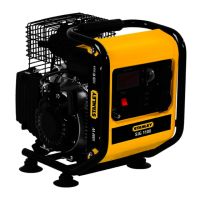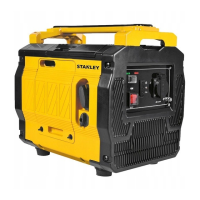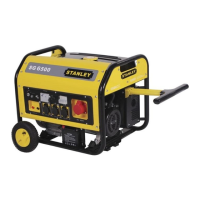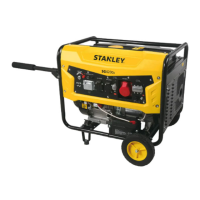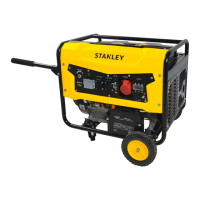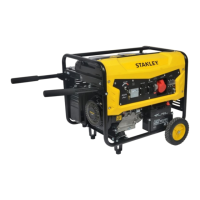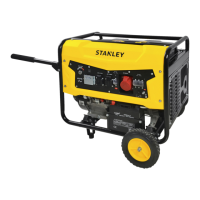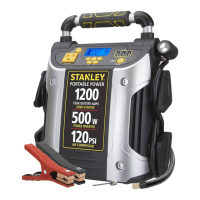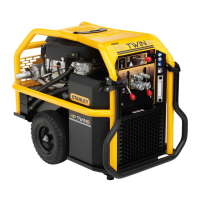17
spark plug.
•
Inspect the immediate vicinity of the generator.
•
Disconnect any electrical equipment which may
already be connected to the generator.
8.1 Starting the engine (Figs. 1 , 2 and 5)
Important: Do not use any chemical starting agents
such as highly volatile fuels or similar.
•
Open the stop cock (Item 3) by turning it down.
•
Move the ON/OFF switch (Item 7) to the "I" position.
•
Pull the choke lever (Item 6).
•
Start the engine with the starter cord (Item 4) by pulling
the handle forcefully. If the engine does not start, pull
the handle again. Important:
Always pull the starter cable slowly until you feel the
initial resistance before you then pull it quickly to start
the engine. Do not allow the starter cable to whip back
of its own accord.
•
Push the choke lever (Item 6) back approximately 15 to
30 seconds after the engine has started.
8.2 Economy mode (only for SIG 2000, SIG 3050)
(Fig. 2)
Economy switch (Item 9) in the "I" On position:
The engine speed is regulated in accordance with
minimum power requirements and the generator runs
quietly and efficiently.
Economy switch (Item 9) in the "O" Off position:
The generator runs at maximum speed.
8.3 Connecting consumers to the generator (Fig. 2)
SIG 1100
•
Connect the 230 V~ electrical appliances to be powered
to the socket (Item 10). Important: This socket is allowed
to be exposed to a continuous (S1) load of 1000 W and
temporarily (S2) for a maximum of 5 seconds to a load of
1,100 W.
SIG 2000
•
Connect the 230 V~ electrical appliances to be powered
to the socket (Item 10). Important: This socket is allowed
to be exposed to a continuous (S1) load of 1800 W and
temporarily (S2) for a maximum of 5 seconds to a load of
2,000 W.
SIG 3050
•
Connect the 230 V~ electrical appliances to be powered
to the socket (Item 10). Important: This socket is allowed
to be exposed to a continuous (S1) load of 2800 W and
temporarily (S2) for a maximum of 5 seconds to a load of
3,000 W.
•
Do not connect the generator to the household
mains system, since this may damage the generator.
Note: Some using electrical appliances here but not
through out manual (power jigsaws, drills, etc.) may
have a higher level of power consumption when used in
difficult conditions.
8.4 Overload cut-out (Fig. 2)
230 V socket
•
The status indicator (Item 14) is lit green during normal
operation.
•
An overload has occurred if the status indicator light
goes out and the overload indicator (Item 13) flashes red.
•
Reduce the level of power to be drawn.
•
Press the overload switch (Item12).
Important: If an overload occurs, ensure that the
power drawn does not exceed the generator's
maximum power output and that no defective
electrical appliances are connected.
G
B

